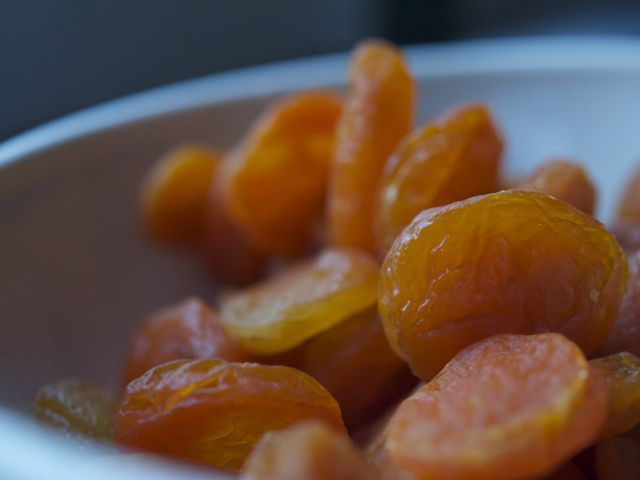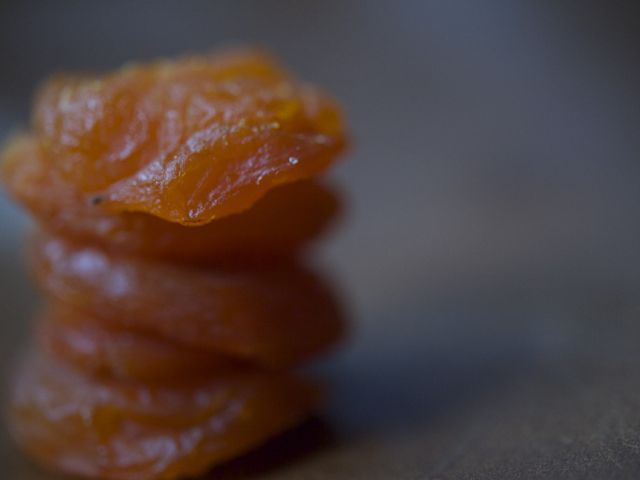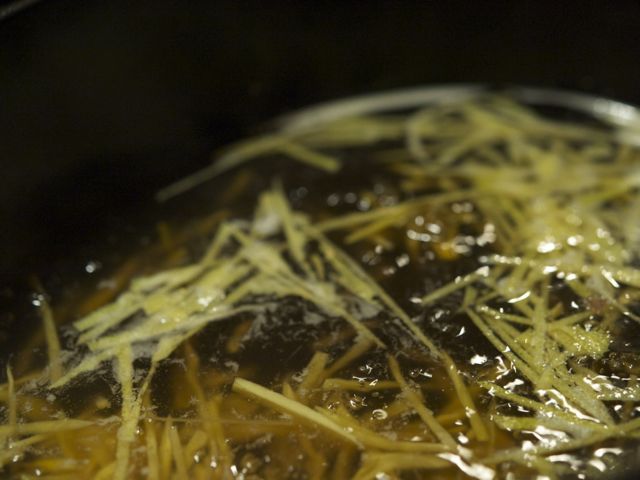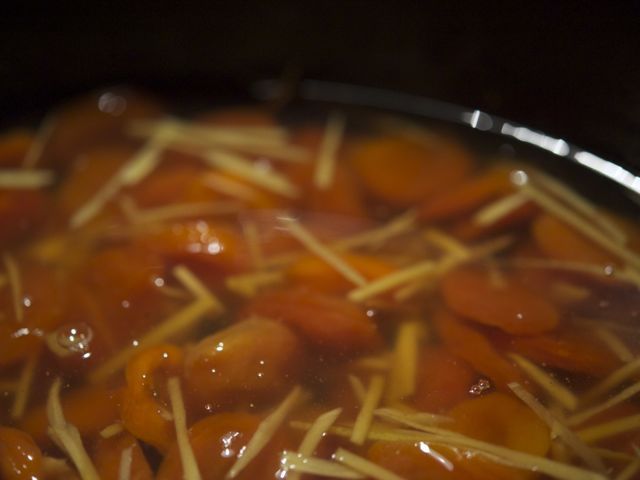1.19.12 Ever So Gingerly
The opening of Greens Restaurant in San Francisco in 1979, under the auspices of the San Francisco Zen Center, forever changed the image of vegetarian food in this country. I began cooking from The Greens Cookbook in 1989, during the year I returned home to Santa Cruz as my father was dying from stomach cancer. It opened my mind to a new kind of cooking based upon vegetables, of which there was a constant, seasonal stream from our garden and local farmers markets. I also had a chance to eat at the restaurant, a beautiful spot overlooking the bay where a subtle message of health and harmony was offered in an elegant organic environment. The restaurant has since evolved toward a lighter, leaner cuisine, and I think the latest edition of the cookbook also differs somewhat from the one I have, but the essential philosophy of founders Deborah Madison and Edward Espe Brown remains intact. I have misplaced the book now (hopefully it's in storage somewhere), but I recall many of the dishes: saffron custard with eggplant; butter-fried potatoes with curry; baked polenta with tomato and gorgonzola; and a simple recipe for dried apricots poached with ginger and served cold with a dollop of crème fraîche.
I went out of my mind reading the latest issue of Lucky Peach, David Chang's inspired magazine, and was especially taken with Adam Gollner's article about the apricots of Tajikistan. I tracked down the source and ordered 9 pounds of these dried beauties, most of which I plan to use for jam. They are juicy, pliable and bursting with notes of honey, flowers and citrus.The apricot's scientific name, Prunus armeniaca (Armenian plum), derives from the assumption that it was originally cultivated in Armenia. Although an archaeological excavation there found apricot seeds in an Eneolithic-era site, the true origin of the fruit's domestic cultivation appears to be either China or India in about 3000 BC. Its introduction to Greece is attributed to Alexander the Great, and the Roman General Lucullus (106–57 B.C.) also exported some trees from Armenia to Europe. I love the image of battle-weary Roman soldiers licking the sweet orange juice from their fingers.
I remembered this very easy recipe from the Greens cookbook right away when I saw the apricots and knew I had to make a batch. There's not much to it, but you do need to take the time to peel and slice lots of ginger and a bit of lemon peel into slim matchsticks. This creates just the right texture in the final dish, when you have a bite of velvety sweet apricot offset by chewy, pungent strands, bound together in an amber syrup. You can tell by their color that apricots are loaded with beta-carotene; they're also high in vitamin A and fiber.
Although you may be tempted to dig right in while it's still warm, something magical happens when this is thoroughly chilled. A thick pour of heavy cream or a generous blob of crème fraîche is all you need to bring out the best in this simple dessert. The apricots are wonderful on their own; served alongside panna cotta, poundcake or cornmeal biscuits; or spooned over yogurt for breakfast. Any leftover syrup is delicious stirred into soda or prosecco, or makes a lovely cocktail with gin.
Poached Apricots with Ginger
from the Greens Restaurant cookbook
serves 6
serves 6
- — 750 ml water
- — 200 grams organic cane sugar
- — 40 grams peeled fresh ginger, cut along the grain into fine strips
- — 200 grams dried apricots
- — peel of 1 lemon, cut into fine strips
Combine the water and sugar in a saucepan and bring to a boil over moderate heat. Add the ginger and simmer for 5 minutes; then add the apricots and lemon peel. Lower the heat and cook the apricots gently until they are tender but not mushy, about 25 minutes. The time will vary depending on how the apricots were preserved and how dry they are.
When the apricots are done, remove them from the syrup with a slotted spoon and put them in a serving dish. Simmer the syrup until small bubbles appear all over the surface and it has thickened slightly, about 10 minutes, then pour it over the fruit. Chill until very cold. Serve plain, with cream or crème fraîche.
 Download Recipe
Download Recipe










6 Comments